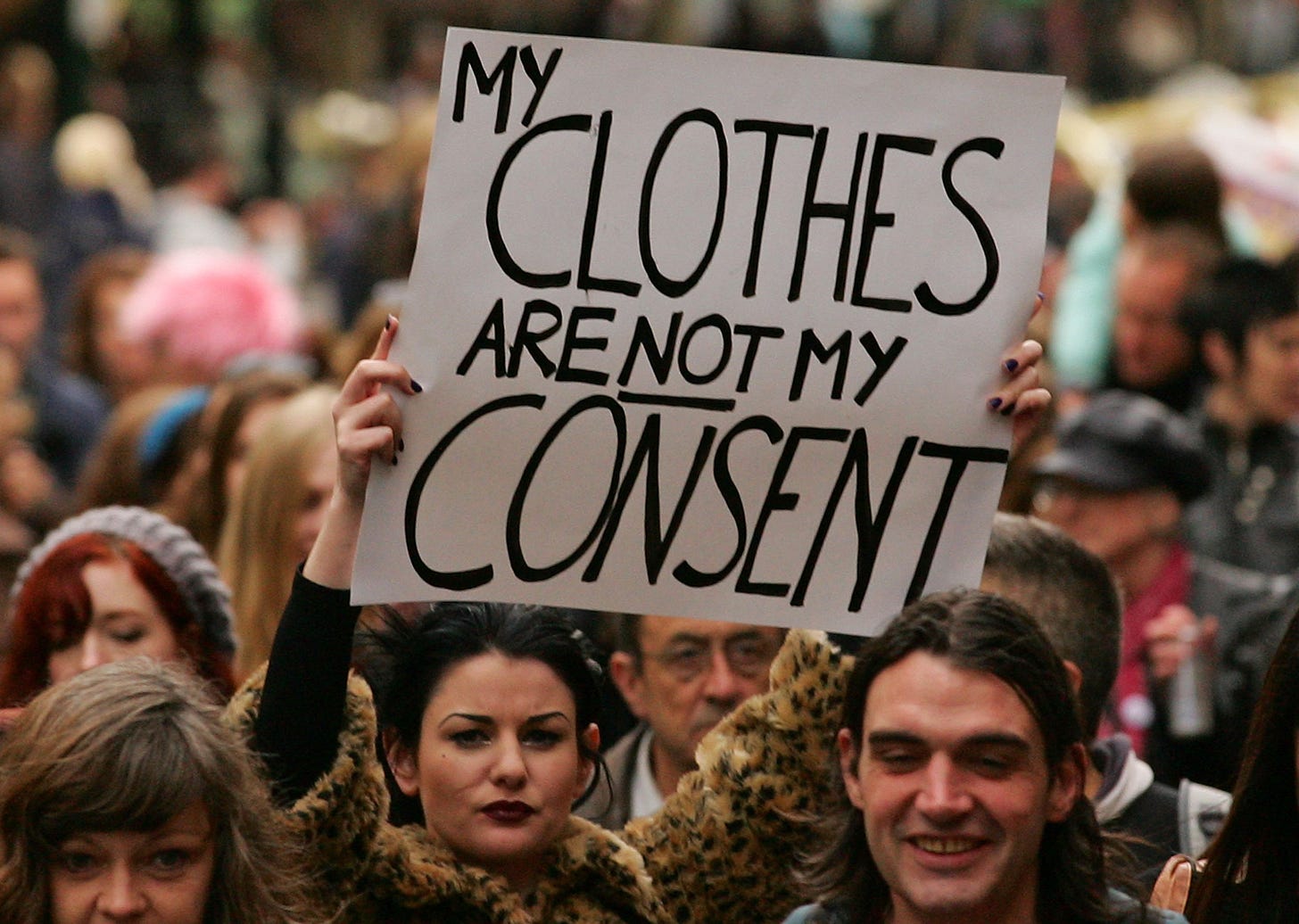A Florida school is under fire this week for altering at least 80 female students’ yearbook photos to appear more ‘modest’. Hints of cleavage were blurred or erased, and shirts were poorly-photoshopped to cover more skin. A Bartram Trail High School representative told The New York Times that the girls’ pictures would have normally been omitted from the yearbook altogether for violating their dress code, and the alterations were “a solution to make sure all students were included.” How magnanimous!
Tellingly, a picture of the boys swim team in Speedos went untouched.
Outdated and sexist dress codes are the norm in most schools across the country. The regulations range from rules about skirt lengths and bare midriffs to outright bans on leggings and showing shoulders. While schools do have dress code rules for boys—generally regarding vulgar t-shirt slogans—it’s almost exclusively female students who are targeted by administrators. They’re pulled out of class or stopped in the hall, humiliated and made to change into baggy shirts and sweats.
These girls are told that their clothes are a “distraction” from learning, as if their male peers are incapable of absorbing algebra while in the presence of bare legs. (There is no equivalent concern, of course, that pulling girls out of class might be a distraction to their education.)
In addition to sending the very dangerous message that girls are responsible for boys’ desire and behavior, dress code proponents suggest these rules aren’t just about boys’ distractibility—but girls’ safety. That by banning ‘suggestive’ clothing, schools can curb bullying and sexual harassment.
The only thing worse than telling girls to cover up in order to be respected, is telling them to cover up in order to be protected.
Girls and women are harassed and assaulted in everything from skirts and heels to sweatpants and sneakers. They are raped in army fatigues and school uniforms, pajamas, and even—I’m horrified to say—diapers. There is nothing a person can wear that will provoke sexual violence.
The truth is that clothes don’t sexualize or endanger girls, adults do. If a school official looks at a teenager in a tank top and sees something sexual, the problem is not the student.
In Virginia, for example, a teenager was kicked out of her prom because her classmates’ fathers complained she was inspiring “impure thoughts.” Why should girls be punished for adult men’s fucked up brains?
The issue isn't just why girls are disciplined, but how. At a school in North Dakota, for example, administrators banned girls from wearing leggings and had them watch clips from Pretty Woman to prove that only sex workers wore tight pants. And in Florida, a high school dean made a teenager “move around” to gauge how inappropriate her breasts looked. The girl, who wasn’t wearing a bra because she was recovering from a severe sunburn, was then forced to put bandaids over her nipples.
All of this is far more sexualizing than a bare shoulder in science class.
It’s not a coincidence that the students most likely to be dress coded are those with curvier bodies—a shirt that adults deem ‘appropriate’ on one girl will be banned on another. Dress codes also disproportionately target and punish Black girls, who are more likely to be hyper-sexualized. And that’s the rub: It’s never really been the clothes that schools are taking issue with, but the bodies they deem dangerous.
With every detention given, every sweatshirt forced onto a student, schools are teaching girls that there is something bad and shameful about their natural development. Even worse, these children are learning that the adults meant to care for them look at their bodies and see sex. Imagine being 13 years-old and putting on leggings because they’re comfortable, only to find out a teacher sees something very different.
That’s why dress codes aren’t just sexist; they’re sexual harassment. What else would you call adults systematically singling out girls, publicly shaming them, and interrupting their education?
Let girls live in their bodies. Let them go to class, play sports, eat lunch, hang out with their friends and experiment with fashion. And if you’re worried that someone will get the wrong idea by their outfit—change the world, not their shirt.
If you like & value this newsletter, please consider moving to the paid version. You’ll have access to all my pieces and be able to comment on columns and in open threads. (“One Good Thing,” where folks share something positive that happened to them that week—from getting a promotion or seeing a friend to growing a tomato for the first time—is a real highlight. It’s an incredible serotonin boost & really lovely!)







I remember being so innocent in the fifth through seventh grade that when I wore short-shorts my only concern was that my butt (or underwear) wasn’t showing. My friends and I used to ask each other, “is my butt showing?” As long as my actual buttocks were covered, I thought I was fully dressed. Oh, to be that innocent kid again. I had no inkling of the responsibility implied by “ girls are responsible for boys’ desire and behavior” back then. Because it makes no sense, of course. Boys are responsible for boys’ desire. I don’t know why we still have to explain this to them today, but it’s depressing and exasperating.
"Don't make me hurt you," said every abuser and weirdo ever.